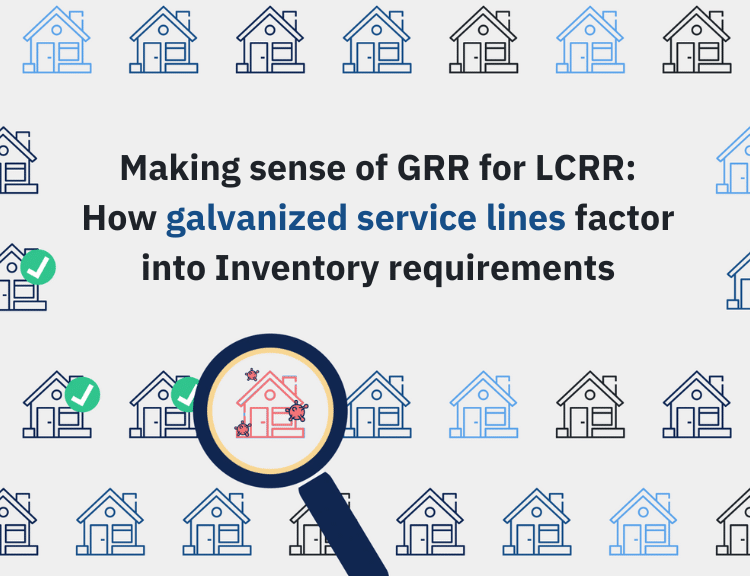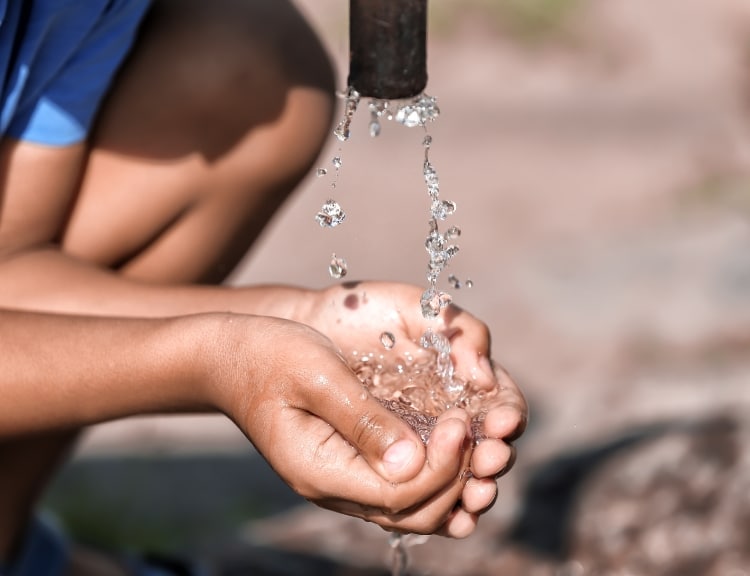We talk a lot about ‘compliance’ but the reality is that compliance is complicated and changes over time. This series breaks down compliance requirements across the LCR and the proposed LCRI to help you understand the who, what, and when of compliance.
The October 2024 Service Line Inventory deadline is now 3 months away. In the previous post, we explored the options no- and low-lead water systems can use to classify their unknowns as “non lead.” But many water systems with no or few lead service lines – as well as those with lead – are still tackling the challenge of identifying and compliantly managing galvanized and galvanized-requiring-replacement (GRR) service lines.
Why are we even talking about galvanized service lines?
Galvanized steel pipes can carry many of the same public health risks as lead pipes. Galvanized lines are dipped in a protective zinc coating containing lead that can leach into drinking water when corroded after decades of water exposure.
Galvanized pipes can also capture lead from upstream sources and release lead if water chemistry changes or pipes are disturbed. This means that even if a lead service line is replaced, lead particulates can still be present in the downstream galvanized pipes and can be released into the drinking water.
How does the LCRR treat galvanized service lines?
The LCRR focuses specifically on galvanized-requiring-replacement (GRR) service lines, defining GRRs as galvanized lines that are or were historically downstream of a lead service line. If a water system is unable to show that a galvanized service line was never downstream of an LSL, it has to assume there was an upstream LSL and classify that line as GRR. Like for lead, the LCRR only requires identifying service lines that meet this definition in the Inventory; we expect the upcoming LCRI to require the replacement of GRR lines on the same timeline as lead.
Based on this EPA definition, galvanized service lines that do not meet the GRR definition – in other words, where the water system can show that they have never been downstream of lead – are defined as Non-Lead by the LCRR and we do not expect them to be subject to replacement requirements in the LCRI.
However, as discussed previously in this series, state primacy agencies have the ability to adjust or enhance vocabulary and material verification methods for the water systems in their state. Some states, such as Michigan and Pennsylvania, have more specific definitions of GRRs and include, for example, identification of any lead-containing component or require designation of GRR for any galvanized service line. We also continually hear from proactive water systems who are looking to identify and replace all galvanized service lines regardless of current compliance requirements.
Tackling GRR for your Inventory
Compliantly managing GRR for your service line inventory is particularly complex because it requires an understanding of historical service line materials in addition to current service line materials. And if any component of the upstream service line has unknown materials (past or present), that galvanized service line suddenly becomes classified as GRR.
Adding another layer of complexity, the current Bipartisan Infrastructure Law (BIL) funding that is available for lead and GRR replacements can only be used for galvanized service lines that are known to have been downstream of lead, past or present. So if a water system has a galvanized line with unknown materials upstream, they are required to classify it as GRR for the Inventory, but unable to use BIL funds for its replacement. This places the financial burden of replacement on the system itself and, ultimately, the ratepayers. This makes the timely, accurate, and efficient identification and replacement of GRR service lines all the more critical.
BlueConduit can help. Our expert policy team helped write the book (okay, the whitepaper) on GRR, clearly outlining the general and predictive modeling process for classifying service lines as GRR. And our LSL Predictions and No Lead Validation solutions both can provide GRR-likelihood predictions as well as best-in-class technology solutions to ensure inventory accuracy and compliance, as well as an efficient path forward for replacement.
Ready to start talking about tackling GRR? Reach out to our experts today.






